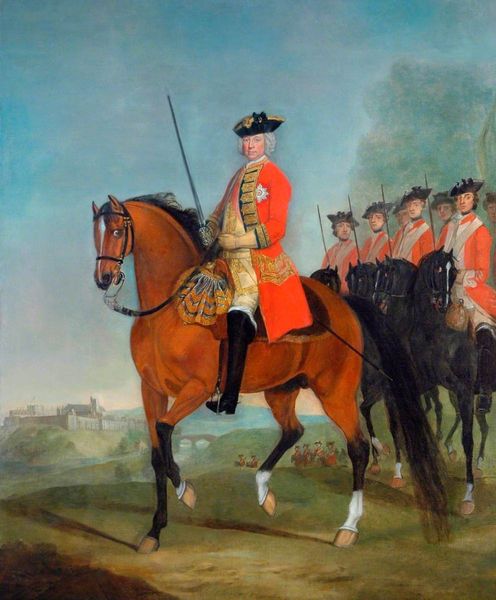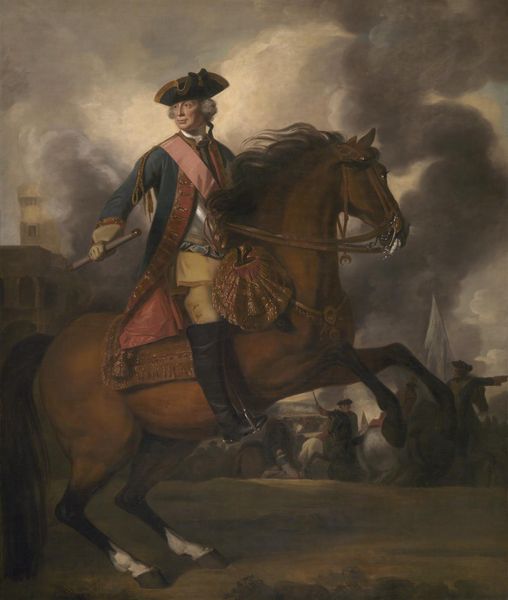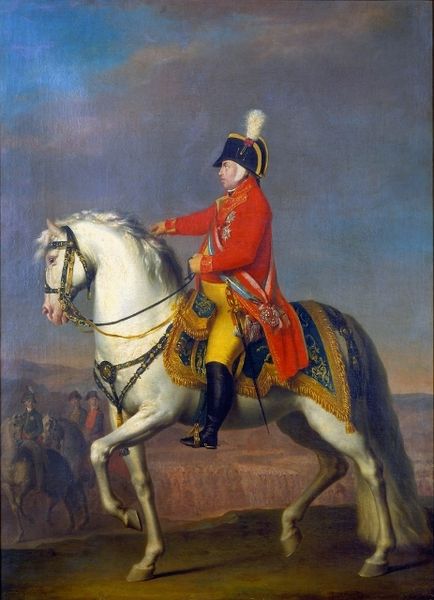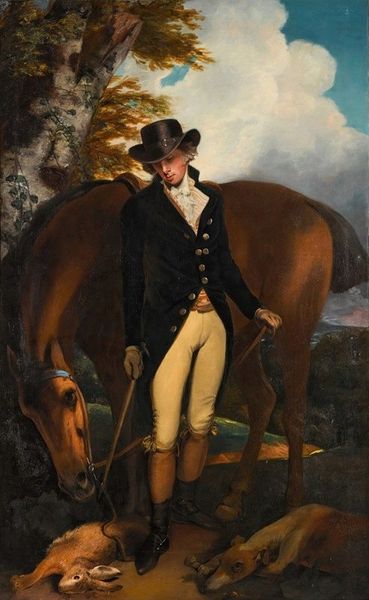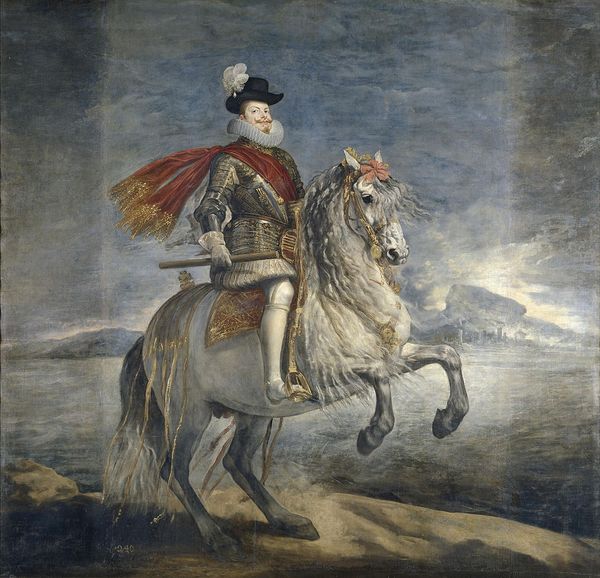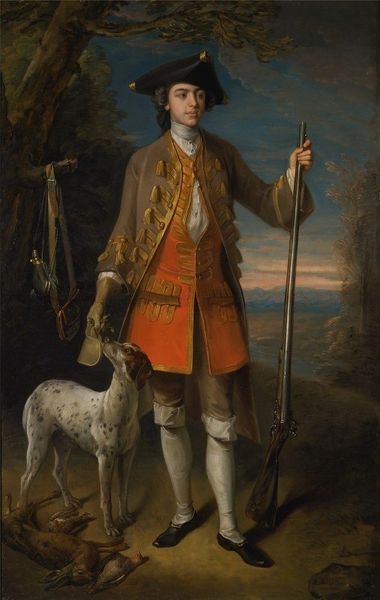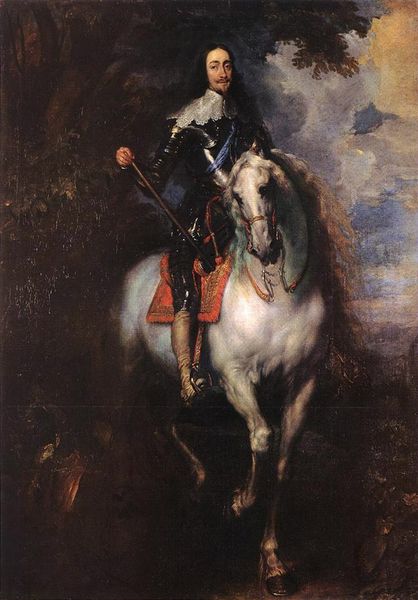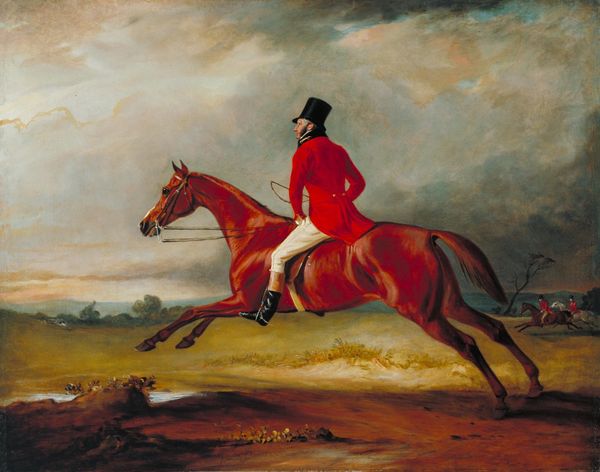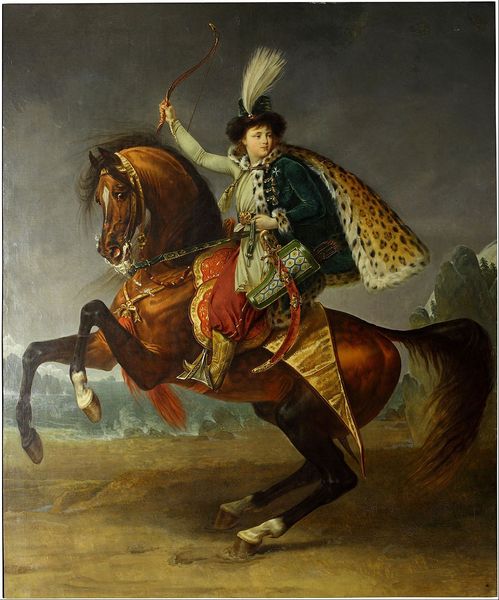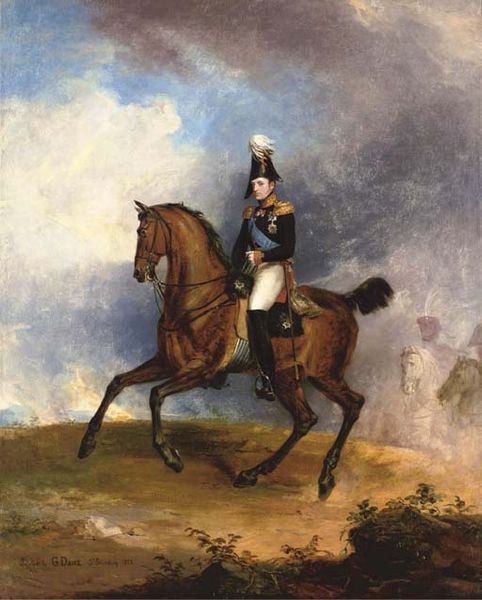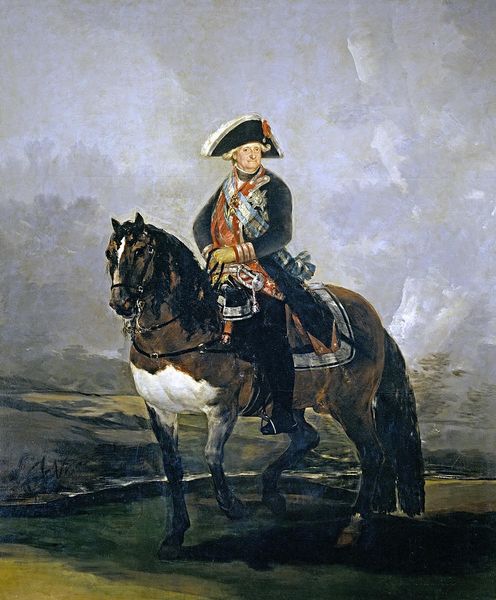
painting, oil-paint
#
portrait
#
baroque
#
painting
#
oil-paint
#
oil painting
#
history-painting
#
academic-art
#
portrait art
Copyright: Public domain
Editor: Here we have David Morier’s 1750 oil painting, "William Augustus, Duke of Cumberland." The Duke looks quite confident, mounted on that beautiful grey horse, almost theatrical in his posture. What kind of statement do you think Morier was trying to make with this portrait? Curator: It's crucial to understand how such portraits functioned within the political landscape. This image served as propaganda. Consider the Duke's role in the Jacobite rising. Editor: Right, he was known as "Butcher Cumberland" after Culloden, wasn't he? Curator: Precisely. So, the painting is not simply about likeness; it's about rehabilitating the Duke's image. Think about how the artist is attempting to control the narrative, to shape public perception, particularly given the brutality associated with his suppression of the rebellion. The confident posture, the imposing horse… these are all deliberate choices, aiming to project power and authority, burying the controversy under layers of regal grandeur. What effect do you think his flamboyant attire and pristine horse are meant to create for the British public? Editor: I guess it’s intended to make him seem more like a heroic leader and less like… a butcher. But the slight smile looks almost smug now that you point out the spin. Curator: Exactly. It invites questions about the ethics of representation and how power utilizes art to manipulate historical memory. We aren't just seeing a Duke; we are seeing the carefully constructed image of a Duke meant to sway opinion. Editor: This makes me look at the portrait completely differently now! It’s less about the Duke himself, and more about how the monarchy wants him to be seen. Curator: Indeed, and that's the power of understanding art within its socio-political context. The painting prompts us to analyze the motives behind its creation and the public it was designed to influence.
Comments
No comments
Be the first to comment and join the conversation on the ultimate creative platform.

